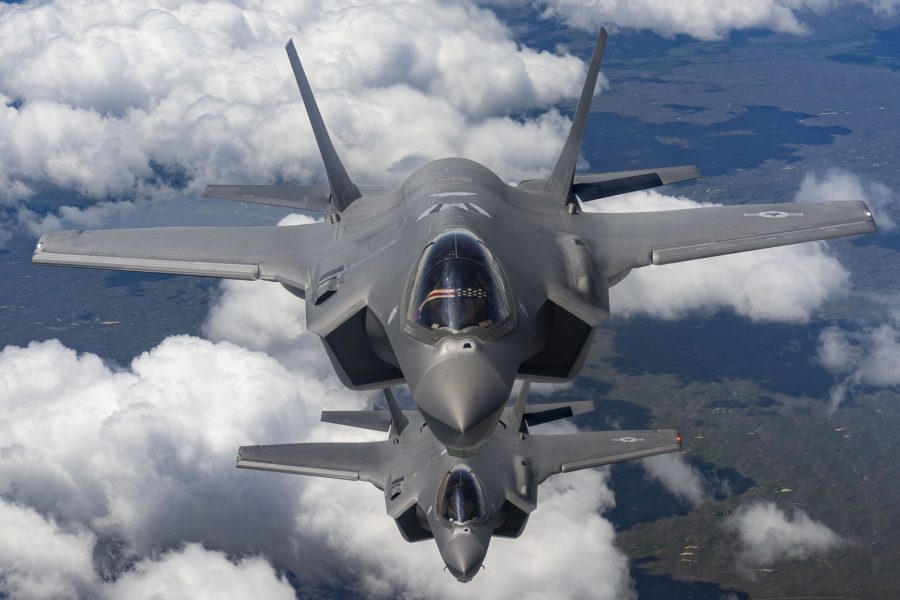Chauncey McIntosh will become vice president and general manager of the F-35 program at Lockheed Martin starting Dec. 1, the defense contractor announced Oct. 9. He succeeds Bridget Lauderdale, who is retiring after 38 years with the company and nearly four years heading the F-35 program.
McIntosh has been Lauderdale’s deputy since June, but he has had a number of career turns with Lockheed managing portions of the Joint Strike Fighter program, covering more than nine of his 24 years with Lockheed. He has run the F-35 training and logistics effort, F-35 development, F-35 Joint Reprogramming Systems, and was the senior manager of the F-35 simulation and systems integration lab.
His most recent job before returning to the F-35 enterprise was as vice president and general manager of Integrated Warfare Systems and Sensors, which oversees the Navy Aegis program. During that time, he “oversaw the successful transformation of Aegis software development,” and was responsible “for the strategic, operational and financial performance of missile defense, radar, shipbuilding, directed energy and combat system integration programs that serve to increase customer capability and help achieve mission success,” Lockheed said in a press release.
Before that, McIntosh was VP and general manager of Training and Logistics Solutions, where he led “the strategic growth of mission readiness and sustainment programs, including the F-35,” the company noted.

Prior to working on the F-35, McIntosh was the F-22 test project manager, and before that, the F-22 Integration Lab operations manager. He started at Lockheed in 2000 as a software/avionics engineer. He previously worked at General Dynamics as a software engineer.
During his tenure at Lockheed Martin, McIntosh “has held numerous positions of increasing responsibility in program and project management, software engineering, systems engineering and avionics design across the F-35, F-22, C-5, P-3 and S-3 platforms,” the company said. “McIntosh is a 2003 graduate of the Lockheed Martin Engineering Leadership Development Program and a 2013 graduate of the Lockheed Martin Program Management Development Program.”
Lockheed may have chosen McIntosh for his deep knowledge of and success with software engineering, which will dominate the upcoming phases of the program.
In his new position, he’ll be “responsible for further strengthening positive customer experiences by reinforcing and continually growing the capability and reliability of the F-35; showcasing significant program progress; and ensuring the F-35 program meets the speed, agility, quality and affordability requirements deserved and expected by U.S. and international customers,” Lockheed said.
Greg Ulmer, president of Lockheed Martin Aeronautics and a former F-35 program manager himself, said McIntosh “is an exceptional leader with distinct qualifications needed to lead the F-35 program. His selection showcases the strength and depth of Lockheed Martin’s leadership succession planning.”
The F-35 is the Defense Department’s largest program, targeted to provide more than 2,200 fighters for the U.S. military and potentially thousands more to international customers. With recent orders, 19 countries will operate the fifth-generation F-35.
McIntosh takes over the F-35 in the midst of significant program transitions. Deliveries of the fighter recently resumed after a year of completed jets going directly into storage after production. The hold was due to the fighters being built with the Tech Refresh 3 update of software, processors, and displays that the Pentagon refused to accept because flight testing of that new suite was incomplete. It still is, but the need to get aircraft absorbed into the various units caused the Joint Program Office to allow deliveries to resume with a “truncated” TR-3 software package. The full-up suite is expected to complete testing next year.
The F-35’s Block 4 upgrade—which relies on the TR-3—is starting to build up momentum, and the fighter’s F135 engine is also undergoing an upgrade to provide the aircraft with more performance, cooling, and electrical power.
Lockheed delivered the 1,000th F-35 over the summer to an Air National Guard Unit. The U.S. Air Force maintains 1,763 F-35s as its buy objective, but so far has only taken delivery of about 450 jets.
